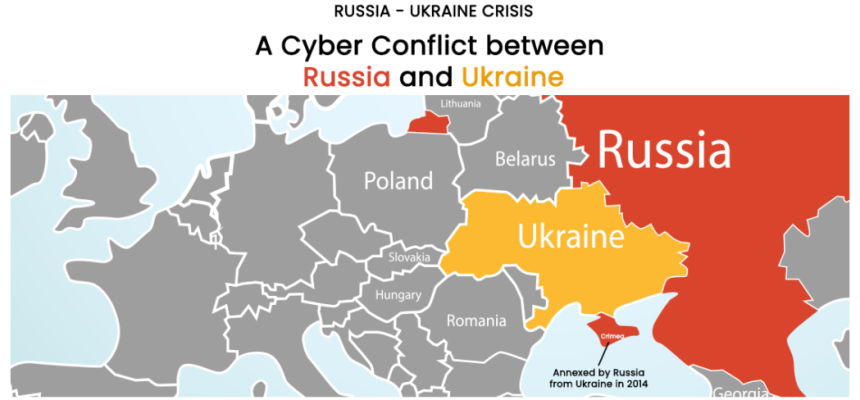There have many instances where countries have attacked each other through the use of cyberattacks. In 2007, Estonia witnessed a number of attacks by the Russian government that rendered many Estonian banks, government sites and media houses to be taken offline due to the amount of traffic they were receiving. Secondly, the Stuxnet Worm in 2010 was used to attack the nuclear program of Iran that targeted Iran’s supervisory control and data acquisition systems. The attack was carried out through the use of Universal Serial Bus and it was considered to be one of the most sophisticated attacks in history.
It is evident that in this time and age, cyber warfare is a necessary tool for many states in order to carry out offensive attacks against the enemy. Cyberwarfare is a form of warfare in which cyber attacks are used against the enemy, be it a state, organization, or even a non-state group. The aim of a cyber attack is to cause the maximum amount of damage to the enemy including the disruption of their computer systems, and in extreme cases, these can also cause death. The cyber attacks are usually carried out through the use of viruses, phishing, use of malware which can take out a whole working infrastructure, distributed denial-of-service which are used to deny access to the users of targeted computer systems, use of spyware or cyber to conduct intelligence operations to steal information that is of national importance and can compromise the security of a nation and ransom-ware that is used to keep systems hostage. In fifth-generation warfare, the spreading of disinformation and propaganda is also considered to be part of cyber warfare.

The most recent incidents of cyber warfare can be seen in the case of the Russian conflict with Ukraine. Previous attacks include the attack on Western Ukraine’s Prykarpattyaoblenergo utility, a power generation firm, that caused more than 225,000 people to lose power across Ukraine. That attack was linked to Sandworm, a Russian cyber military unit. Another attack where government and business computer systems in Ukraine were hit by the NotPetya cyberattack; the crippling attack was attributed to Russia which spread to computer systems worldwide and caused billions of dollars in damages.

Cyberwarfare is now preferred by a number of states because of its capability to dismantle the enemy state without having to mobilize forces to target systems that will cause harm to the other state’s national interests. Cyberwarfare is often confused with cyber espionage; in the former, the aim is to disrupt the working systems framework of the enemy state and in the latter, the goal is to gather as much intelligence as possible without the hackers being detected. The states can try to put up firewalls in order to make their systems safe and their data secure, however, the hackers can still find a weak spot in the network and exploit that.
The recent conflict between Russia and Ukraine is comprised of many cyber attacks. In January, Ukraine was faced with a cyber-attack where hackers had launched defacement attacks on a number of Ukrainian government websites which were taken down. These websites included the Ministry of Foreign Affairs the Ministry of Education along with others. The hackers had posted a message on the websites saying, “Be afraid and expect the worst”. The attack was not attributed to Russia but the European Union hinted that it might be Russia that is the culprit. In another instance, Microsoft observed a number of destructive malware in computer systems that belonged to many Ukrainian agencies and organizations that closely work with the Ukrainian government. Those organizations were specified as they “provide critical executive branch or emergency response functions,”.

In February 2022, Ukraine’s State Service of Special Communications and Information Protection of Ukraine (SSSCIP), was hit by a DDoS attack that hit the websites and of Ukraine’s Ministry of Defense and armed forces along with the websites of two Ukrainian banks. A day later, it was revealed that Russian hackers had most likely gained access to computer systems of Ukraine’s important websites like military and energy, to gain intelligence and in the case of a military attack by Russia on Ukrainian soil, disrupt all the important infrastructures in Ukraine. On the 23rd of February, a new form of destructive malware was discovered to be spreading to many Ukrainian computer networks. A malware by the name HermeticWiper can wipe off or corrupt all the data on a targeted computer system. The targets of this malware were financial organizations and government contractors. Another DDoS attack was detected which took down the government and banking websites. Mykhailo Fedorov, Ukraine’s digital transformation minister, had confirmed that such an attack had taken place that had affected a number of Ukrainian government websites, websites related to Ukrainian banks, and websites related to the Ukrainian parliament.
Related Article: The Russia Ukraine Crisis; is it really a World War III?
The globalization of the world was brought about by an advancement that was not thought of and not heard of by any country. Internet is a staggering invention of the world but at the same time, it is rambunctious, as there is no one who is monitoring the activities and trying to prevent the bad. Russia’s use of cyber warfare and cyber espionage is a first of its kind. It was no news that cyber capabilities will be part of the arsenal of countries after their invent, but Russia’s use of them as weapons of the first strike is the very first in history. This shows how Russia is overtly attacking Ukraine with military weapons while simultaneously it is attacking the latter covertly using its cyber capabilities by dismantling its governmental websites and its financial resources. Russia’s cyber capabilities have turned into sophisticated weapons which it can use against states like the US, UK, etc, which it has been doing and has been caught doing so a number of times.






